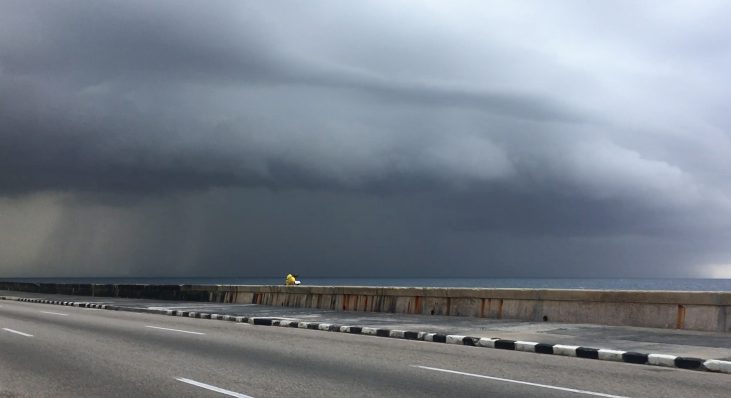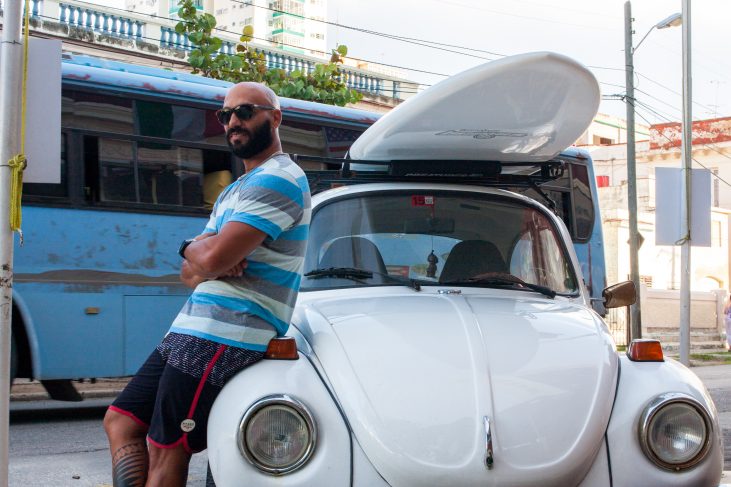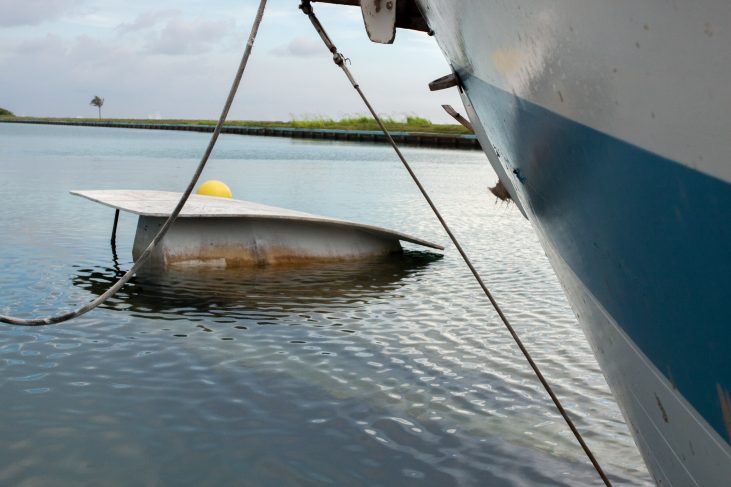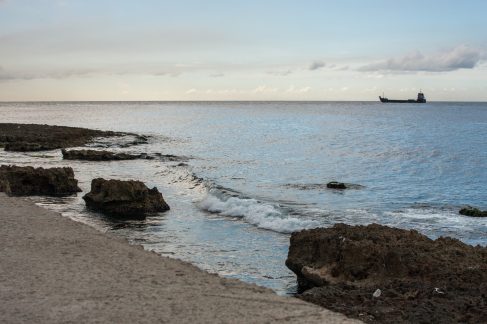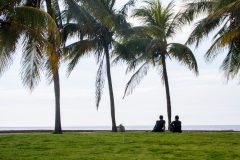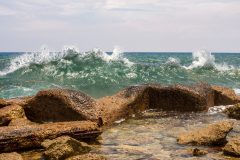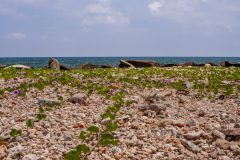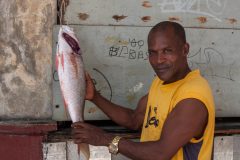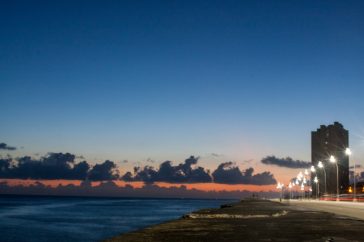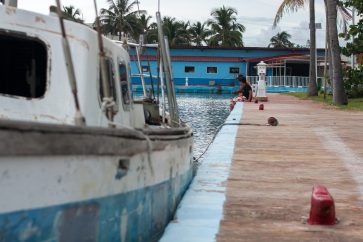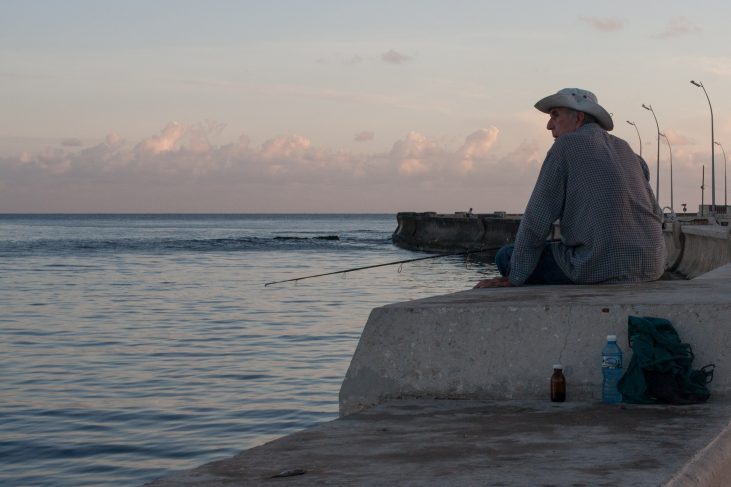Cuba’s Coastline is No Man’s Land
By Hannah Childress
Gaining access to information on water activities in Cuba proved harder than expected. Local Cubans claim that access to water for recreational or commercial purposes is strictly prohibited or limited. When asked to explain why such limitations exist they said they didn’t know why, that this is just the way it is. As one local street artist who goes by Martí has said, “It is learning to see the lies… to hear the silent truths. They do not want us to know, so we must solve the equation ourselves. To be free, we must be free of the reality that is not reality.”
Prior to coming to Cuba, I began research on what sort of action sports are practiced on the island. During my research, I found that kite surfing is one of the most popular sports. Opposite the popularity of kite surfing was traditional surfing. Currently, there is a movement to increase the popularity of surfing and a push to gain recognition from the Cuban government to recognize it as an official sport. With this recognition, local surfers would gain easier access to surf equipment and have the opportunity to participate in international competitions.
Intrigued by their struggle I set out to find the Cuban Surfers. Prior to entering Cuba, I reached out to two organizations that promote surfing on the island. Havana Surf Cuba is a non-profit organization that receives and distributes donated supplies to local surfers in need of supplies. Surflibre is a group of Cuban surfers who have built a campaign with Makewild, a group of filmmakers, to educate the people and government of Cuba on surfing. These organizations are advocates, ensuring the growth of surfing in Cuba and the importance of maintaining a healthy ocean environment for surfer and sea creatures alike.
Once in Cuba, I began my search for surfing. This mission of discovery was very difficult. Every chance I had at talking to the locals (i.e. taxi drivers, beach resort employees, dance partners at the local salsa bar…) I would ask them where I could find surfing or even just surfers. Every time I inquired about surfing I was greeted with a confused look that followed with laughter. They all thought I was crazy and tried to convince me that surfing did not exist in Cuba.
On one of my days of searching for surfers, I went to a beach break called Calle 70 Break in Miramar. I was directed to go there by a man named Bob Samen. Samen is one of the organizers of Havana Surf Cuba who I made contact with via email prior to departing for Cuba. Samen instructed me to go to Calle 70 Break and insured that I could find the “surf crew” who could direct to the surf organization. I hitched a ride in a taxi mid morning to Calle 70. I walked around the beach for several hours asking locals if they knew where I could find surfers or if they knew Samen. I even showed them a photo I have of Samen that I got from the organization’s website. My search for any signs of surfing failed.
After six days of rejection, I almost began to believe that surfing was just a myth. But on the sixth day of my visit I finally made contact with a surfer!
Yuniel Valdarrama the, president of “Surfistas Cubano” and an organizer of Havana Surf-Cuba. Samen had connected me with Valdarrama via email before I left for Cuba. Valdarrama, agreed to meet with me and discuss the state of surfing in Cuba.
The meeting with Valdarrama went well. With this first meeting, I wanted to focus more on learning about his personal life and his passion for surfing. Since it was the end of the day and I didn’t want to inconvenience Valdarrama I made the meeting quick and asked if we could schedule another meeting where I could learn more about the organization and meet other surfers. Valdarrama was very eager to allow me this opportunity and we decided to meet the following Saturday.
To my surprise making plans in Cuba was much harder than it sounded. “Island time” is very prevalent in Cuba. With the lack of quick and easy communication, plans are made tentatively whether you as a visitor understand that or not. After three failed attempts; the slow response when communication electronically and the lack of punctuality, I was never able to meet again with Valdarrama or the other surfers he had offered to introduce me to.
Most places in the world in that are located on coastlines that produce waves, it is easy to find surfing. All you have to do is find an area that shows characteristics in the topography that are consistent of a surf break, sit on the beach when the tide is best for the form of the waves and wait. Eventually, you find someone surfing. In Havana, Cuba and its outlying towns, this is not the case. Since surfing is rare, mostly unheard of by the majority of the population, and the waves only come during the winter storms my chances at finding surfing by exploring the beaches were very low.
During my time in Cuba, I only met one surfer. However, in my search for surfing, I was led to another realization; water activities in Havana and its surrounding towns are nearly non-existent. The coastlines, marinas, and harbors were eerily deserted or quiet.
A perfect example of an eerily quiet aquatic area is Marina Hemmingway. The marina is thirty minutes northwest of Havana. It is a luxurious vacation spot for the elite traveler lined with resorts and boat docks.
My first impression of the marina was that is was a ghost town. There is a rocky beach that bordered the shore, which is hard to walk on and surely detracts anyone from enjoying the beautiful water and view.
The perimeter of the marina has many open slips for tying up boats however, there were no boats in sight. The closer I worked my way into the marina boats began to gradually appear.
The first one was a sunken vessel accompanied with a perfectly buoyant but sadly abandoned sailboat. Leaving my imagination running wild with tales of the captains that once sailed these boats. Did a storm damage their vessel? Did the captain suffer from an ailment that ultimately took their life? Or was it something more realistic; maybe the captain suffered from a financial hardship that led to the abandonment of these once beautiful boats?
The heart of the resort was where the bulk of the boats were docked. This dock was different from the rest; although it was still relatively quiet, surprisingly there was some activity in the water. Two young boys were sailing a small catamaran and a gentleman sat on the dock who seemed to be instructing the boys on how to steer the boat.
I only made it a quarter of the way down the dock before I was stopped for the second time in the marina and told by a Cuban security guard that the dock was for members only and I could only walk on the streets surrounding the resort.
The Malecón, which separates the city of Havana, Cuba from the Caribbean Sea, has been frequently used as a social gathering spot for residents of Havana. In previous years locals would use the water beyond the Malecón as an escape from the heat. However, the Cuba government has prohibited swimming off the Malecón, claiming that the pollution in the water is too toxic for humans to swim in.
As a visitor of Cuba, it is interesting to see how massive the Malecón is and how it completely removes any human interaction from the water as if it is a forbidden land. When you walk along the wall during the day it is nearly deserted of people, yet at night especially on a Saturday evening or a holiday hundreds of local residents swarm the Malecón. Many locals socialize on the wall because it is an affordable alternative to bar hopping in the city. They come to the wall to drink, dance, and sit with friends. Many of them sit on the wall facing the city, engaged in the nightlife, forgetful the water behind them.
Beyond the wall border the water is vast and yet it is rare to see boat traffic unlike most major city coastlines in the world. The massive Malecón acts as a definitive boundary removing any human interest in taking pride in the Havana coastline and the promotion of one of the many beauties that defines the city of Havana.
Although physical access to water off the Malecón is prohibited locals have used it as an alternative source for fishing since boat fishing is allegedly highly regulated and limited by the government. Occasionally, small fishing boats can be spotted in the distance off the Malecón, during dawn and dusk hours. The small presence of fishing was intriguing and attempting to talk to the local fisherman, finding a fishing boat launch or fishing village was the next step in my search for answers.
I set out before sunrise one morning to catch fishing boats leaving a harbor where a river feeds into it, called Boca de la Chorrera. A local named Fran, who plays guitar on the Malecón, told me that it was a fishing village and it would be a good place to talk to some fisherman between six and seven o’clock in the morning before they launched their boats. As I walked to the harbor I saw a few boats pass me. Being told that it was a fishing village I had hopes that there would be more boats leaving later. I arrived at the harbor at 6 o’clock and what the man described as a fishing village was the exact opposite of what a fishing village in any other part of the world would look like. It was a deserted harbor that looked like a continuation of the city of Havana, lined with a residential neighborhood and a restaurant that looked like a castle, empty of any boats or fisherman. Once again, disappointed in my search I cut my losses and hoped that the other fishing locations that Fran had suggested to check out would bring me better luck.
Between the Malecón and the Morro Castle in Havana Vieja, there is the Havana Harbor that is home to many small fishing boats. Early evening the local fishermen return from their daily trip. Securing their boats to the seawall and hopefully offloading their catch for the day. On this day all the boats, with the exception for two, were empty of people; anchored down with a sense of neglect. The emptiness made me wonder if I had come at the wrong time to see the fisherman bringing in their catch for the day. Or rather, if these boats were just floating in the water forgotten by their owners or forbidden by the Cuban government to be used.
Seeing a few of the Cubans standing below the Malecón waiting to tie up the incoming boats looked like a great moment to capture with my camera. I wanted to get a low angle shot of the boats and seeing the locals standing on the other side of the Malecón, I decided it was safe to hop over the wall and take a quick photo.
I hopped back over the wall and only made it about one hundred feet before being stopped by a Cuban Police officer. He called me over to the wall and spoke to me in Spanish. At first, I didn’t know what he was saying but I guess he was calling me over to reprimand me for climbing over the Malecón. I told him, “no entiendo,” which translates to, “I don’t understand,” in English to avoid further punishment by playing the dumb American card. After some stern scolding and hand motions, I replied with, “ok… ok”, and went about my walk. My discovery of the other side of the Malecón was a reminder that the Cuban way is very different from the American way.
Although my search for surfing did not go as planned it led me to a greater realization that has helped me understand why activities such a surfing or fishing are hardly in existence. There is a heavy use of the word “forbidden” in Cuba. During my search for answers, I got a sense that the water of Cuba was forbidden to be used. In attempting to get answers as to why was just as difficult as trying to find the people who somehow have gained access to the water.
One lesson that I have taken from this experience is that expectations are to be taken lightly and reality can drastically change those expectations. The more important lesson I have learned is, a society that lives a life of forbidden opportunities is a society that lives a crippling life. As Martí suggests you must discover the lies to live free and live in your own reality.
